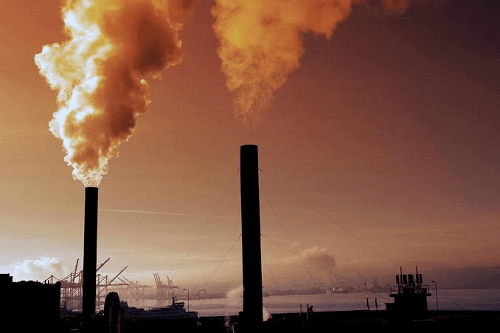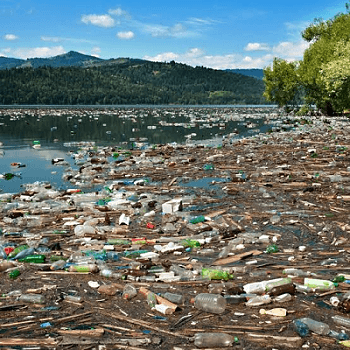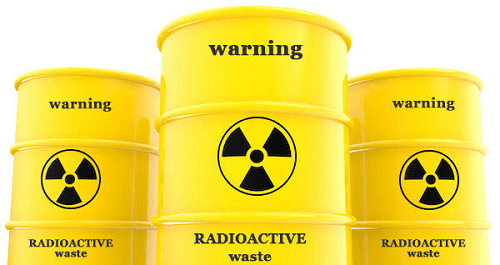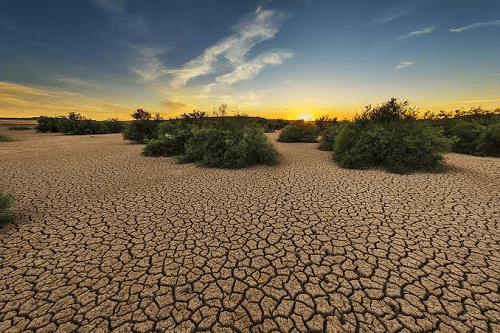Pollution Essay
Environmental pollution is currently the greatest threat to mankind on Earth. It continues to expand every year. We are bothered by this issue on a financial, physical, and social level. Some fatal diseases have also been caused due to environmental contamination. It is necessary to address the issue of environmental pollution, which is getting worse every day, to reduce its negative consequences on both the people and the environment.
Environmental pollution usually has a direct physical impact on people, but it can also have long-term changes in neurochemistry. The most well-known issues caused by pollution include allergies, asthma, eye irritation, nasal obstructions, and many distinct types of respiratory infections. Not only humans but animals are also affected by environmental pollution, damaging their habitat or making it dangerous for them to live there. A significant amount of ozone in the lower atmosphere can cause respiratory difficulties in all species, and acid rain can damage the structure of rivers and oceans, making them hazardous, mainly for aquatic animals. Also, the creatures living near the rivers will not remain untouched by its effect.
In fact, environmental pollution, mostly brought about through human activities, has a detrimental impact on the ecosystem, removing its significant levels and causing even worse effects on the upper layers of Earth. Pollution is to blame for issues like ozone depletion, global warming, the greenhouse effect, glacier melting, etc. Environmental contamination mainly comes in five distinct forms, including air, water, noise, radioactive, and soil pollution.
Let us talk about each form one by one:
Air Pollution

Air pollution is the term used to describe the contamination of the air as a result of chemical compounds in the atmosphere that are dangerous to the health of people and other living things or affect the environment or materials. Biological molecules, inorganic and organic particles, and gases like ammonia, carbon monoxide, sulfur dioxide, carbon dioxide, nitrous oxides, methane, and chlorofluorocarbons are just a few examples of the many different types of air pollutants.
Causes of Air Pollution
The smoke emitted by the big factories and vehicles is the primary source of air pollution in the environment. Additionally, smoke from burning plants in industrial facilities, atomic plants, and woods contributes to air pollution to a great extent.
Effects of Air Pollution
Humans are vulnerable to illnesses, allergies, and even death from air pollution. Air pollution puts people at higher risk for a wide range of pollution-related illnesses, including lung cancer, heart disease, COPD (Chronic Obstructive Pulmonary Disease), and respiratory infections. A growing body of research indicates that exposure to air pollution may be linked to cognitive impairment, lower IQ scores, a higher chance of developing psychiatric illnesses including depression, and poor perinatal outcomes.
Although the impacts of poor air quality on human health are extensive, the respiratory and cardiovascular systems of the body are primarily impacted parts. Additionally, it may disrupt the constructed environment by different means, such as climate change, acid rain, ozone depletion, or habitat degradation. Additionally, it might be harmful to other living things like animals and food crops. Both natural and human-made occurrences have the ability to cause air pollution.
Prevention and Control of Air Pollution
The actions listed below can be taken to control or reduce air pollution.
- Solar energy, wind power, and other clean, renewable energy sources should be adapted.
- In industries, long fireplaces need to be constructed.
- On roads and around homes, more trees should have to be planted.
- Public transportation should be used rather than private vehicles.
Water Pollution

When water bodies are contaminated, usually as a result of human activity, it is referred to as water pollution or aquatic pollution. It has a negative effect on the supply chain of water, affecting how the water is used. Aquifers, reservoirs, lakes, rivers, seas, and groundwater are examples of bodies of water. When contaminants are deposited into these water bodies, water contamination or water pollution occurs.
Causes of water pollution
Sewage discharges, industrial & agricultural releases, and urban runoff, including stormwater, are the four main causes of water contamination. It can be divided into two categories: groundwater pollution and surface water pollution (either freshwater pollution or marine pollution). For instance, dumping wastewater that hasn’t been properly cleaned into natural waters might cause these aquatic habitats to decline. People who use dirty water for drinking, bathing, washing, or irrigation are at risk of contracting waterborne diseases.
Effects of Water Pollution
As a result of water pollution, water bodies are less able to supply the ecosystem services that they would otherwise provide, such as drinking water, causing an increase in waterborne diseases. It also leads to damage to biodiversity. Additionally, it contributes to the eutrophication phenomena, i.e., Fish and other aquatic species may die as a result of this.
Prevention and Control of Water Pollution
The following actions may be taken to reduce water pollution:
- Water consumption should be decreased by altering the strategies used.
- It is necessary to cut back on wastewater output.
- Wash your vehicle or outdoor equipment in a place where the water may drain gravel or grassy area rather than a street.
- Avoid fertilizing the grass just before it rains. The chemicals will end up in waterways and storm drains.
Noise Pollution

Noise pollution, commonly referred to as environmental noise or sound pollution, is the spread of noise that has varying effects on human or animal activities, most of which are to some extent deleterious.
Causes of Noise pollution
Machines, transportation, and propagation systems are the main global sources of outdoor noise. The poor urban design may result in noise pollution or noise disintegration. The sound coming out from industrial and residential buildings may lead to noise pollution in nearby areas. Loud music, engines and horns of vehicles such as cars, trains, or planes, lawn-care equipment, construction, electrical generators, wind turbines, explosions, and many other actions by humans are a few of the main causes of noise in residential neighbourhoods.
Effects of Noise Pollution
Health and behaviour are both impacted by noise pollution. Unwanted noise can harm one’s physiological well-being. Numerous health issues, such as heart problems, high blood pressure, chronic stress, tinnitus, hearing loss, irregular sleep patterns, and other detrimental and upsetting effects, are all linked to noise pollution. A faster loss in cognitive function is also linked to noise pollution. Noise exposure at work can potentially lead to other health problems, such as hearing loss, ear bleeding, etc.
Prevention and Control of Noise Pollution
The following actions can be taken to limit or minimize noise pollution:
- By improving vehicle design and upkeep, road traffic noise can be minimized.
- By developing sound-proofing technology and reducing noise-producing regions, industrial noise can be decreased.
- Night-time use of electrical equipment, loud music, land loaders, public works projects using loudspeakers, etc., should be prohibited.
- Horns, alarms, refrigerators, and other devices are not to be used excessively. Limiting the usage of firecrackers would reduce air pollution and noise.
- A well-built noise absorber is a greenbelt of trees.
Radioactive Pollution

The presence of radioactive chemicals in places where their presence is unanticipated or undesirable, such as on surfaces or within solids, liquids, or gases, is referred to as radioactive contamination, also known as radiological pollution.
As a result of the radioactive decay of the pollutants, ionizing radiation is produced, creating a risk from this contamination (namely alpha, beta, gamma rays, and free neutrons). The concentration of chemicals, the energy of the radiation being produced, the forms of radiation, and the closeness of the contamination to bodily organs all affect the environment greatly.
Causes of Radioactive Pollution
Both natural and man-made factors can be categorized as causes of radioactive pollution. Nuclear fuel and fission products will contaminate the air, soil, nearby humans, plants, and animals after an atmospheric nuclear weapon detonation or a nuclear reactor containment breach. The floor and any rags used to clean up the spill could become contaminated if a radioactive substance, such as uranyl nitrate, were to spill from a vial. The Bikini Atoll, the Rocky Flats Plant in Colorado, the region around the Fukushima Daiichi nuclear accident, the region around the Chernobyl disaster, and the region around the Mayak disaster are some notable examples of widespread radioactive contamination.
Effects of Radioactive Pollution
Low levels of radiation risk on a tiny portion of the body might influence only the cell membrane and cause minor skin irritation. Other acute symptoms of atomic radiation include wounds brought on by nausea, vomiting, diarrhoea, hair and nail loss, and subcutaneous haemorrhage. But, the high radiation exposure carries a danger of acute toxicity that can swiftly kill the victim. The victim typically loses vitality and dies of anaemia, infection and bleeding. Since radiation is exposed to the atmosphere, soils also contain it. The various nutrients in the soil react with radioactive chemicals, destroying those nutrients and making the soil poisonous and infertile as a result.
Prevention and Control of Radioactive Pollution
The methods for removing radioactive contamination are listed below:
- Use proper radioactive waste disposal techniques.
- Any item containing radioactive material must be marked with a warning label that includes the appropriate safety measures and guides to handle it carefully.
- The waste can be recycled and utilized for other reasons, including as fuel in another reactor, though it is difficult to store or dispose of the waste. This helps to safeguard the environment.
- Workers in nuclear power plants need to wear protective clothing.
Soil Pollution

The presence of xenobiotic (human-made) chemicals or other changes to the natural soil environment are what create soil contamination, soil pollution, or land pollution as a feature of land degradation.
Causes of Soil Pollution
Industrial activity, agricultural chemicals, or inappropriate waste disposal are the usual causes of soil pollution. Petroleum hydrocarbons, polynuclear aromatic hydrocarbons (including naphthalene and benzo(a)pyrene), solvents, insecticides, lead, and other heavy metals are the most frequent compounds involved as pollutants in soils. The level of industrialization and the presence of chemical substances are greatly associated with soil contamination.
Effects of Soil Pollution
Health hazards, direct contact with contaminated soil, vapour from toxins, or secondary pollution of water supplies inside and beneath the soil are the major factors to worry about soil pollution. Additionally, plants that grow in soils with high concentrations of heavy metals have the potential to transport toxic metals up the food chain. Diseases linked to pollution often arise as a result of this.
Prevention and Control of Soil Pollution
The actions listed below should be followed to prevent soil pollution:
- Fertilizer and pesticide use have to be kept to a minimum.
- Cropping methods should be developed to stop weed development.
- Wastes should be dumped in designated pits.
- Managed grazing and forest operations.
- In places subject to wind erosion, use wind buffers and windshields.
- Plan to plant grasses that bind soil along rivers and slopes that are prone to rapid erosion.

